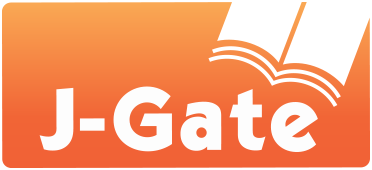What Types of Vocabulary Do Students Learn? A Computer-assisted Study of EFL Textbooks
DOI:
https://doi.org/10.54855/acoj.241518Keywords:
Corpus Studies, ESL, Lexical Clusters, BNCAbstract
There has been an increase in research based on corpus analysis, especially in the field of teaching English to foreign language students. Such research covers aspects like grammar, syntax, morphology, semantics, and pragmatics in a broader sense. However, corpus studies on vocabulary are limited, and the need to work on them has increased in the last decade. Vocabulary is essential in learning and teaching any second language to English as a foreign language (EFL) classes. This study aims to thoroughly analyze vocabulary in three textbooks through a corpus analysis tool that is used to teach English as a foreign language to level 1, level 2, and diploma-taking students at a college in Saudi Arabia. Vocabulary is scrutinized through AntConC (1.4.0), a freeware program that uses statistical algorithms to provide visualizations of word frequencies, lexical clusters, and keywords. The results can be seen in the form of lists, tables, or charts to help you understand and draw conclusions. This selected corpus contains 163,716 word tokens. After statistical analysis of these words, English language teachers (ELTs) will understand what type of vocabulary is important for students for a particular level. It will also tell whether the vocabulary used in these textbooks is the correct representation of academic words when compared to baby BNC. Moreover, the study will provide insight to academicians, language teachers, and curriculum designers on what type of vocabulary is suitable for developing reading, writing, listening, or speaking skills according to the needs and levels of students.
References
Bin-Hady, W. R. A., Al-Kadi, A., Hazaea, A., & Ali, J. K. M. (2023). Exploring the dimensions of ChatGPT in English language learning: A global perspective. Library Hi Tech. Vol. ahead-of-print No. ahead-of-print. DOI: https://doi.org/10.1108/LHT-05-2023-0200 DOI: https://doi.org/10.1108/LHT-05-2023-0200
Cameron, L. (2001). Teaching languages to college learners. Cambridge: Cambridge University Press. DOI: https://doi.org/10.1017/CBO9780511733109
Chan, Y. J. (2000). A study of the development and trend of children's English education and issues on teachers, materials, and methodology. Journal of National Taipei Teachers College, 13, 203-238.
Creswell, J. W. (2012). Educational Research. Pearson.
Foster, J., & Mackie, C. (2013). Lexical analysis of the Dr. Seuss Corpus. Concordia Working Papers in Applied Linguistics, 4, 1–21.
Ho, P. X. P. (2024). Using ChatGPT in English Language Learning: A Study on I.T. Students’ Attitudes, Habits, and Perceptions. International Journal of TESOL & Education, 4(1), 55-68. https://doi.org/10.54855/ijte.24414. DOI: https://doi.org/10.54855/ijte.24414
Hoey, M. (2000). The hidden lexical clues of textual organization: A preliminary investigation into an unusual text from a corpus perspective. In L. Burnard & T. McEnery (Eds.), Rethinking Language Pedagogy from a Corpus Perspective (pp. 31–42). New York: Peter Lang.
Kohnke, L., Moorhouse, B. L., & Zou, D. (2023). ChatGPT for Language Teaching and Learning. RELC Journal, 54(2), 537-550. https://doi.org/10.1177/00336882231162868. DOI: https://doi.org/10.1177/00336882231162868
Jiménez Catalán, R.M., & Mancebo Francisco, R. (2008). Vocabulary input in EFL textbooks. RESLA, 21, 147–165.
Keck, C.M. (2004). Corpus linguistics and language teaching research: Bridging the gap. Language Teaching Research, 8(1), 83–109. DOI: https://doi.org/10.1191/1362168804lr135ra
Konstantakis, N., & Alexiou, T. (2012). Vocabulary in Greek college learners’ English as a foreign language course books. The Language Learning Journal, 40(1), 35–45. DOI: https://doi.org/10.1080/09571736.2012.658222
Lee, D. (2001) ‘Genres, registers, text types and styles: clarifying the concepts and navigating a path through the BNC Jungle’ in Language Learning and Technology, vol 5 no 3, September 2001; available online at http://llt.msu.edu/vol5num3/lee/default.html.
Nation, I.S.P. (2013). Learning Vocabulary in Another Language (2nd ed.). Cambridge: Cambridge University Press. DOI: https://doi.org/10.1017/CBO9781139858656
Nation, I.S.P. (1990). Teaching and learning vocabulary. New York, NY: Newbury House.
Nation, I.S.P. (2006). How large a vocabulary is needed for reading and listening? Canadian Modern Language Review, 63(1), 59–82. DOI: https://doi.org/10.3138/cmlr.63.1.59
Rixon, S. (1999). Where do the words in EYL textbooks come from? In S. Rixon (Ed.), College learners of English: Some research perspectives (pp. 55–71). Harlow: Longman.
Roessingh, H., & Cobb, T. (n.d.). Profiling the vocabulary of K-2 learners. Retrieved on April 19, 2016 from http://www.uclagary.ca/langugaelearning/profilingvocabulary.
Shin, D., & Chon, Y.V. (2011). A corpus-based analysis of curriculum-based elementary and secondary English textbooks. Multimedia-Assisted Language Learning, 14(1), 149–175. DOI: https://doi.org/10.15702/mall.2011.14.1.145
Skolverket. (2006). Läromedlens roll i undervisningen. Grundskollärares val, användning och bedömning av läromedel i bild, engelska och samhällskunskap [The role of teaching materials in teaching: Secondary school teachers’ choice, use and evaluation of teaching materials in Arts, English and Social Sciences]. Stockholm: Skolverket.
Thompson, P. (2000). Citation practices in PhD theses. In L. Burnard & T. McEnery (Eds.), Rethinking language pedagogy from a corpus perspective (pp. 91–102). New York, NY: Peter Lang.
Thompson, P., & Sealey, A. (2007). Through children’s eyes? Corpus evidence of the features of children’s literature. International Journal of Corpus Linguistics, 12(1), 1–23. DOI: https://doi.org/10.1075/ijcl.12.1.03tho
Tyler, A. (2012). Cognitive linguistics and second language learning: Theoretical basics and experimental evidence. London: Routledge. DOI: https://doi.org/10.4324/9780203876039
Waring, R., & Takaki, M. (2003). At what rate do learners learn and retain new vocabulary from reading a graded reader? Reading in a Foreign Language, 15(2), 130–163.
West, M. (1953). A general service list of English words. London: Longman.
Yang, I. L. (2006). On the issue of vocabulary size in English Teaching in Taiwan. Journal of the National Institute for Compilation and Translation,34(3), 35-44.
Zahar, R., Cobb, T., & Spada, N. (2001). Acquiring vocabulary through reading: Effects of frequency and contextual richness. Canadian Modern Language Review, 57(4), 541–572. DOI: https://doi.org/10.3138/cmlr.57.4.541
Downloads
Published
How to Cite
Issue
Section
License
Copyright (c) 2024 Nasreen Bibi, Samina Hayat, Abdul Aleem Yahya

This work is licensed under a Creative Commons Attribution 4.0 International License.
License
Authors retain copyright and grant the journal the right of first publication with the work simultaneously licensed under a Creative Commons Attribution 4.0 International License that allows others to share the work with an acknowledgment of the work's authorship and initial publication in this journal.
Authors are able to enter into separate, additional contractual arrangements for the non-exclusive distribution of the journal's published version of the work (e.g., post it to an institutional repository, in a journal or publish it in a book), with an acknowledgment of its initial publication in this journal.
Authors are permitted and encouraged to post their work online (e.g., in institutional repositories or on their website) prior to and during the submission process.
Copyright
The copyright of all articles published in the acoj remains with the Authors, i.e. Authors retain full ownership of their article. Permitted third-party reuse of the open access articles is defined by the applicable Creative Commons (CC) end-user license which is accepted by the Authors upon submission of their paper. All articles in the acoj are published under the CC BY-NC 4.0 license, meaning that end users can freely share an article (i.e. copy and redistribute the material in any medium or format) and adapt it (i.e. remix, transform and build upon the material) on the condition that proper attribution is given (i.e. appropriate credit, a link to the applicable license and an indication if any changes were made; all in such a way that does not suggest that the licensor endorses the user or the use) and the material is only used for non-commercial purposes.











